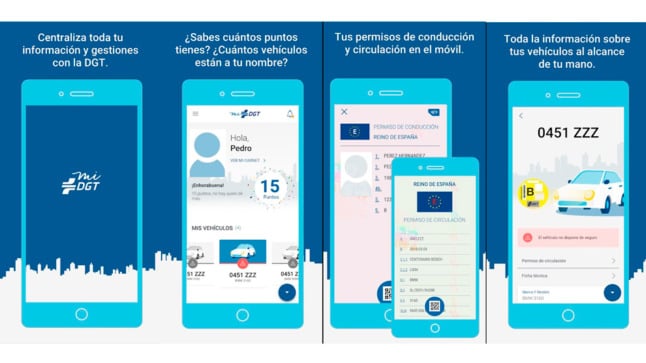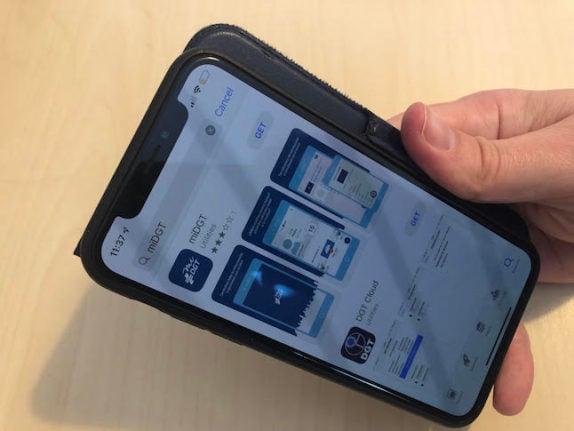The latest update to the miDGT (My DGT) app for drivers in Spain improves on several functions, as well as adding new ones.
The most notable of these is that it now allows drivers to pay fines via their mobile phones.
Drivers no longer have to go to the bank or DGT (Directorate General of Traffic) offices to pay fines for speeding or other traffic offences and can simply pay it online via the app by inputting their bank details.
Rather than waiting to make an appointment or standing in the queue at the bank, it can even be done from your sofa at home.
In addition, the app also enables you to download a receipt for the payment if you ever need proof.
And there a more upgrades to an app which already allows drivers to carry with them a digital version of their driving licences on their phones.
READ ALSO – Driving in Spain: the new rules and fines in 2022

Car sharing updates
Car sharing is becoming more common for young people who may not be able to afford their own cars or who only need them during certain times, such as weekends.
The new miDGT update also addresses this by introducing several new functions. One of these is enabling you to find out who received the fine if you share a car with others or yours was borrowed by friends or family members.
The app also allows you to indicate the usual driver of a vehicle by putting their ID and date of birth, so the fines will reach them. The update also means that vehicle documentation can be shared with other drivers, if one person has the physical papers at home.
READ ALSO – How to cut travel costs by carpooling in Spain: Eight trustworthy options
Requesting appointments and checking results
Another new addition to the app, means that it is now possible to request an appointment at the DGT offices via the app. Learner drivers can also consult the results of their exams.
READ ALSO: How much does it cost to get your driving licence in Spain?
In addition to confirming that your registration or driving license is valid, the authenticity of official documents can also be verified using a CSV (Secure Verification Code). This code, issued by the DGT, can be scanned into the app, in order to display the documents on your smartphone screen.
It also gives you the option to download the documents onto your phone if you ever need to show them without having the physical documents with you.
App not in English
Unfortunately, the mi DGT app is currently only available in Spain’s five official languages but not in English.
To help our readers who are still learning Spanish navigate the homepage of the mi DGT app, here are the translations to the main categories:
Mis vehículos: My vehicles
Mis multas: My fines
Mis trámites: My processes
Nota examen: Exam result
Verificaciones: verifications
Cita previa: prior appointment
READ ALSO: Beat the queues – 23 official driving matters you can do online in Spain



 Please whitelist us to continue reading.
Please whitelist us to continue reading.
Member comments